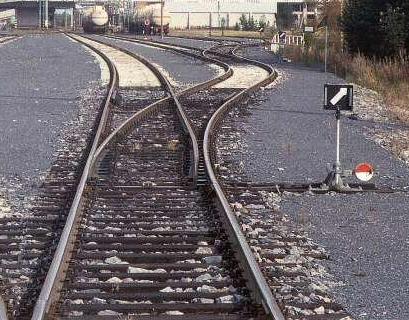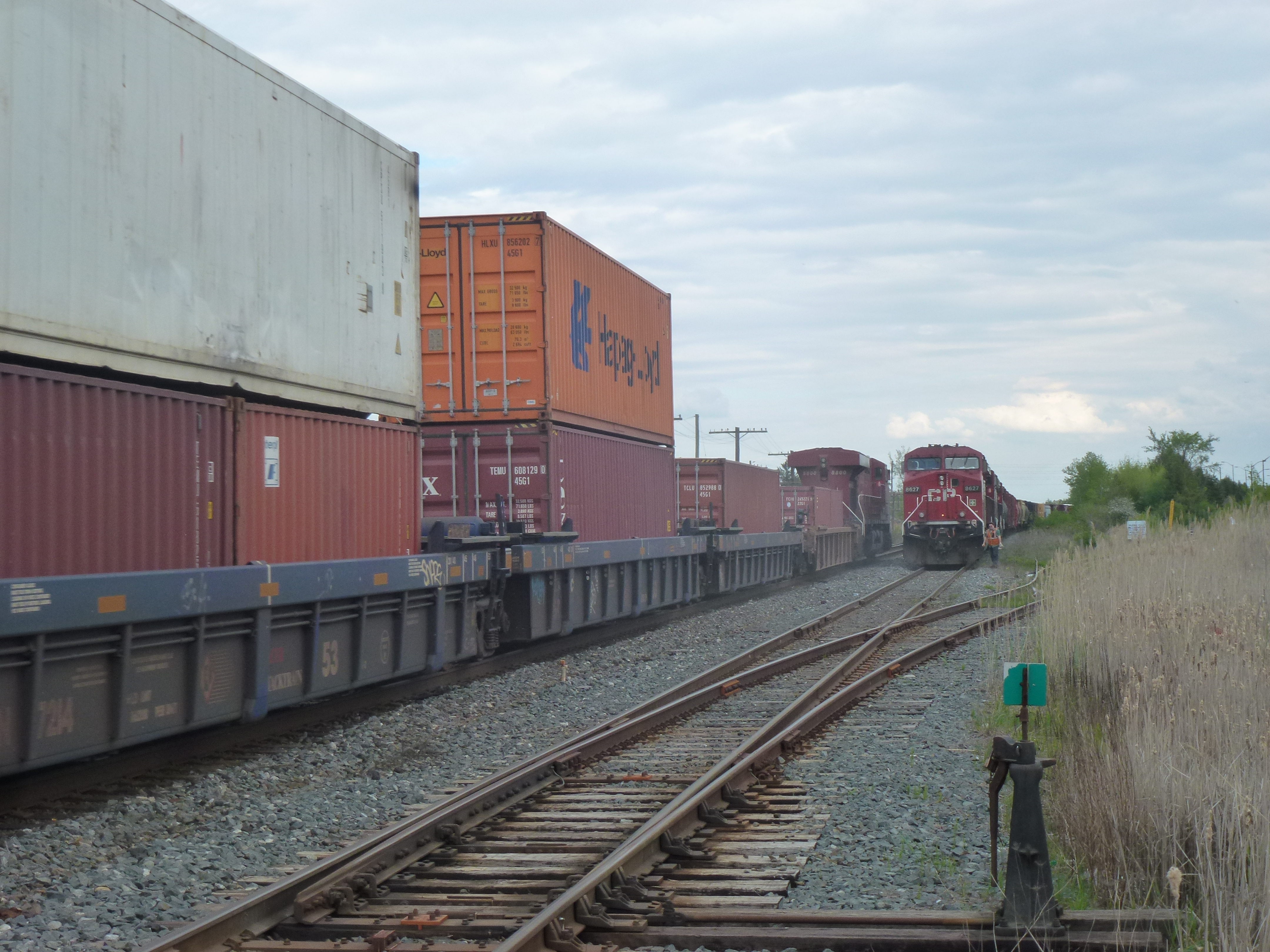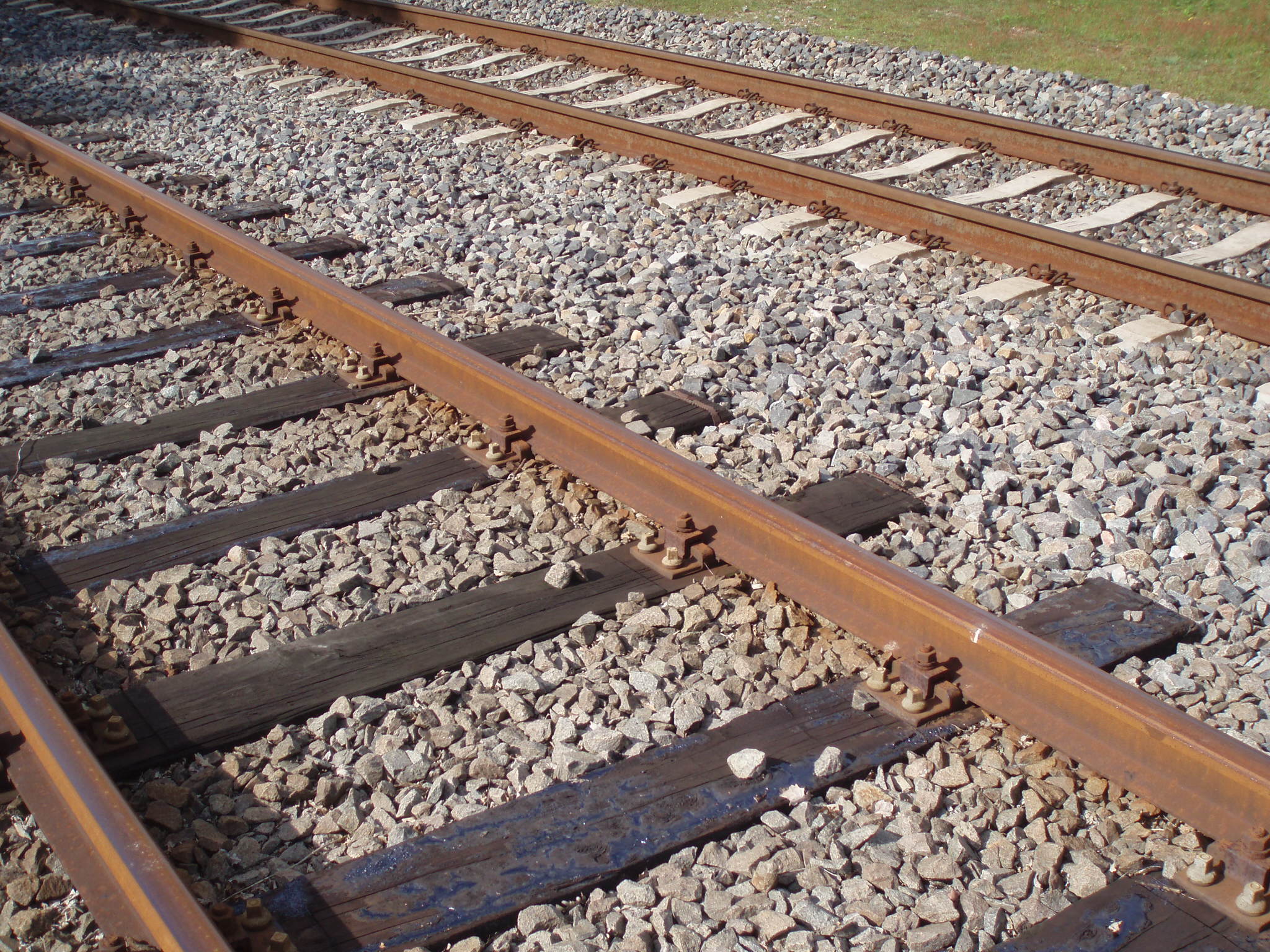|
Ucea–Victoria Railway Line
The Ucea–Victoria railway line is a Romanian standard gauge single-track railway branching from Ucea railway station on Căile Ferate Române, CFR Căile Ferate Române Line 200, line 200, at Metres above sea level, above sea, and heading South towards Victoria, Brașov, Victoria city, at above sea. It is currently used only for Rail freight transport, freight transport by Viromet S.A. in Victoria. History Construction The birth and development of the railway was closely linked to that of ''Ucea'' (later ''Ucea-Fabrică'' and then ''Victoria'') town and chemical plant. As a preliminary work, by Decree-Law nr. 3456 from 20 September 1939, the Armament Endowment Ministry was allowed to lend CFR 90 million lei for repairing and strengthening the railway between Podu Olt and Ucea in order for it to sustain heavier traffic. The birth certificate of the line was Decree-Law nr. 3667 from 7 October 1939, allowing the construction of a new railway line for Ucea-Fabrică in Făgă ... [...More Info...] [...Related Items...] OR: [Wikipedia] [Google] [Baidu] |
Standard Gauge
A standard-gauge railway is a railway with a track gauge of . The standard gauge is also called Stephenson gauge (after George Stephenson), international gauge, UIC gauge, uniform gauge, normal gauge in Europe, and SGR in East Africa. It is the most widely used track gauge around the world, with about 55% of the lines in the world using it. All high-speed rail lines use standard gauge except High-speed rail in Russia, those in Russia, High-speed rail in Finland, Finland, High-speed rail in Uzbekistan, Uzbekistan, and some line sections in High-speed rail in Spain, Spain. The distance between the inside edges of the heads of the rails is defined to be 1,435 mm except in the United States, Canada, and on some heritage British lines, where it is defined in Imperial and US customary measurement systems, U.S. customary/Imperial units, British Imperial units as exactly "four feet eight and one half inches", which is equivalent to 1,435.1mm. History As railways developed and expa ... [...More Info...] [...Related Items...] OR: [Wikipedia] [Google] [Baidu] |
Podu Olt
Podu ( Romanian for "the bridge") starts off the names of several places in Romania. It is also a traditional system of cultivation used by tribes in India, whereby different areas of jungle forest are cleared by burning each year to provide land for crops. Places * Podu Broşteni * Podu Coşnei * Podu Corbului * Podu Corbencii * Podu Cristinii * Podu Cheii * Podu Dâmboviţei * Podu Doamnei * Podu Grosului * Podu Hagiului * Podu Ilfovăţului * Podu Iloaiei * Podu Jijiei * Podu Lacului * Podu lui Galben * Podu lui Paul * Podu Lung * Podu Muncii * Podu Nărujei * Podu Oprii * Podu Oltului * Podu Popa Nae * Podu Pietriş * Podu Pitarului * Podu Rizii * Podu Stoica * Podu Şchiopului * Podu Turcului * Podu Ursului * Podu Văleni * Podu Vadului {{geodis ... [...More Info...] [...Related Items...] OR: [Wikipedia] [Google] [Baidu] |
Industrial Railways In Romania
Industrial may refer to: Industry * Industrial archaeology, the study of the history of the industry * Industrial engineering, engineering dealing with the optimization of complex industrial processes or systems * Industrial city, a city dominated by one or more industries * Industrial loan company, a financial institution in the United States that lends money, and may be owned by non-financial institutions * Industrial organization, a field that builds on the theory of the firm by examining the structure and boundaries between firms and markets * Industrial Revolution, the development of industry in the 18th and 19th centuries **Second Industrial Revolution * Industrial society, a society that has undergone industrialization * Industrial technology, a broad field that includes designing, building, optimizing, managing and operating industrial equipment, and predesignated as acceptable for industrial uses, like factories * Industrial video, a video that targets “industry” as it ... [...More Info...] [...Related Items...] OR: [Wikipedia] [Google] [Baidu] |
Railway Switch
A railroad switch ( AE), turnout, or (set of) points ( CE) is a mechanical installation enabling railway trains to be guided from one track to another, such as at a railway junction or where a spur or siding branches off. Design The parts of a turnout are known by different names in different jurisdictions. The main terms in U.S. and UK usage are shown in the selectable diagrams. In this article, the U.S. term is listed first and UK second, in parentheses. The most common type of switch consists of a pair of linked tapering rails, known as ''points'' (''switch rails'' or ''point blades''), lying between the diverging outer rails (the ''stock rails''). These points can be moved laterally into one of two positions to direct a train coming from the point blades toward the straight path or the diverging path. A train moving from the narrow end toward the point blades (i.e. it will be directed to one of the two paths, depending on the position of the points) is said to ... [...More Info...] [...Related Items...] OR: [Wikipedia] [Google] [Baidu] |
Siding (rail)
In rail terminology, a siding is a low-speed track section distinct from a running line or through route such as a main line, branch line, or spur. It may connect to through track or to other sidings at either end. Sidings often have lighter rails, meant for lower speed or less heavy traffic, and few, if any, signals. Sidings connected at both ends to a running line are commonly known as loops; those not so connected may be referred to as single-ended or dead-end sidings, or (if short) stubs. Functions Sidings may be used for marshalling (classifying), stabling, storing, loading, and unloading rail vehicles. Common sidings store stationary rolling stock, especially for loading and unloading. Industrial sidings (also known as spurs) go to factories, mines, quarries, wharves, warehouses, some of them are essentially links to industrial railways. Such sidings can sometimes be found at stations for public use; in American usage these are referred to as team tracks (after ... [...More Info...] [...Related Items...] OR: [Wikipedia] [Google] [Baidu] |
Railroad Tie
A railroad tie, crosstie (American English), railway tie (Canadian English) or railway sleeper ( Australian and British English) is a rectangular support for the rails in railroad tracks. Generally laid perpendicular to the rails, ties transfer loads to the track ballast and subgrade, hold the rails upright and keep them spaced to the correct gauge. Railroad ties are traditionally made of wood, but prestressed concrete is now also widely used, especially in Europe and Asia. Steel ties are common on secondary lines in the UK; plastic composite ties are also employed, although far less than wood or concrete. As of January 2008, the approximate market share in North America for traditional and wood ties was 91.5%, the remainder being concrete, steel, azobé (red ironwood) and plastic composite. Tie spacing may depend on the type of tie, traffic loads and other requirements, for example on North American mainline railroads to on London, Midland and Scottish Railway joi ... [...More Info...] [...Related Items...] OR: [Wikipedia] [Google] [Baidu] |
Railway Signalling
Railway signalling (), or railroad signaling (), is a system used to control the movement of railway traffic. Trains move on fixed rails, making them uniquely susceptible to collision. This susceptibility is exacerbated by the enormous weight and inertia of a train, which makes it difficult to quickly stop when encountering an obstacle. In the UK, the Regulation of Railways Act 1889 introduced a series of requirements on matters such as the implementation of interlocked block signalling and other safety measures as a direct result of the Armagh rail disaster in that year. Most forms of train control involve movement authority being passed from those responsible for each section of a rail network (e.g. a signalman or stationmaster) to the train crew. The set of rules and the physical equipment used to accomplish this determine what is known as the ''method of working'' (UK), ''method of operation'' (US) or ''safe-working'' (Aus.). Not all these methods require the use of p ... [...More Info...] [...Related Items...] OR: [Wikipedia] [Google] [Baidu] |
Section House (railway)
A section house is a building or house-like structure located near or next to a section of railroad used for housing railroad workers, or for the storing and maintenance of equipment for a section of railroad. Section houses were used mainly from the 1890s to the 1960s. By the 1970s, section houses were being slowly phased out. In Canada section houses were usually located right across from the railway station. In the UK, a section house may be a building near a police station, providing collective accommodation for officers. Examples United States ;Alaska * Potter Section House, Potter, Alaska, now housing a small museum with a rotary snow plow and crew cars, located south of Anchorage, Alaska. * Whitney Section House, built in 1917 in Wasilla, Alaska. ;Arizona * Benson Section House, built by Southern Pacific Railroad in 1880s–'90s in Benson, Arizona. * Elgin Section House, Elgin, Arizona, built for the now-abandoned Benson-to-Nogales mainline of the New Mexico & Arizona Ra ... [...More Info...] [...Related Items...] OR: [Wikipedia] [Google] [Baidu] |
Station Building
A station building, also known as a head house, is the main building of a passenger railway station. It is typically used principally to provide services to passengers. A station building is a component of a station, which can include tracks, platforms, an overpass or underpass, and a train shed. Normally, a station building will be of adequate size for the type of service that is to be performed. It may range from a simple single-storey building with limited services to passengers to a large building with many indoor spaces providing many services. Some station buildings are of monumental proportions and styles. Both in the past and in recent times, especially when constructed for a modern high-speed rail network, a station building may even be a true masterpiece of architecture. A typical railway station building will have a side entrance hall off the road or square where the station is located. Near the entrance will be a ticket counter, ticket machines, or both. There will ... [...More Info...] [...Related Items...] OR: [Wikipedia] [Google] [Baidu] |
Track Ballast
Track ballast is the material which forms the trackbed upon which railroad ties (UK: sleepers) are laid. It is packed between, below, and around the ties. It is used to bear the compression load of the railroad ties, rails, and rolling stock; to facilitate drainage; and keep down vegetation that can compromise the integrity of the combined track structure. Ballast also physically holds the track in place as the trains roll over it. Not all types of railway tracks use ballast. A variety of materials have been used as track ballast, including crushed stone, washed gravel, bank run (unwashed) gravel, torpedo gravel (a mixture of coarse sand and small gravel), slag, chats, coal cinders, sand, and burnt clay. The term "ballast" comes from a nautical term for the stones used to stabilize a ship. Construction The appropriate thickness of a layer of track ballast depends on the size and spacing of the ties, the amount of traffic on the line, and various other factors. Track ballast ... [...More Info...] [...Related Items...] OR: [Wikipedia] [Google] [Baidu] |
Embankment (transportation)
An embankment is a raised wall, bank or mound made of earth or stones, that are used to hold back water or carry a roadway. A road, Rail tracks, railway line, or canal is normally raised onto an embankment made of compacted soil (typically clay or rock-based) to avoid a change in level required by the terrain, the alternatives being either to have an unacceptable change in level or detour to follow a contour. A cutting (transportation), cutting is used for the same purpose where the land is originally higher than required. Materials Embankments are often constructed using material obtained from a cutting. Embankments need to be constructed using non-aerated and waterproofed, compacted (or entirely non-porous) material to provide adequate support to the formation and a long-term level surface with stability. An example material for road embankment building is sand-bentonite mixture often used as a protective to protect underground utility cables and pipelines. Intersection of ... [...More Info...] [...Related Items...] OR: [Wikipedia] [Google] [Baidu] |
Grade (slope)
The grade (US) or gradient (UK) (also called stepth, slope, incline, mainfall, pitch or rise) of a physical feature, landform or constructed line is either the elevation angle of that surface to the horizontal plane, horizontal or its tangent. It is a special case of the slope, where zero indicates horizontal plane, horizontality. A larger number indicates higher or steeper degree of "tilt". Often slope is calculated as a ratio of "rise" to "run", or as a fraction ("rise over run") in which ''run'' is the horizontal distance (not the distance along the slope) and ''rise'' is the vertical distance. Slopes of existing physical features such as canyons and hillsides, bank (geography), stream and river banks, and stream bed, beds are often described as grades, but typically the word "grade" is used for human-made surfaces such as roads, landscape grading, roof pitches, rail tracks, railroads, aqueduct (watercourse), aqueducts, and pedestrian or bicycle routes. The grade may refer to ... [...More Info...] [...Related Items...] OR: [Wikipedia] [Google] [Baidu] |






